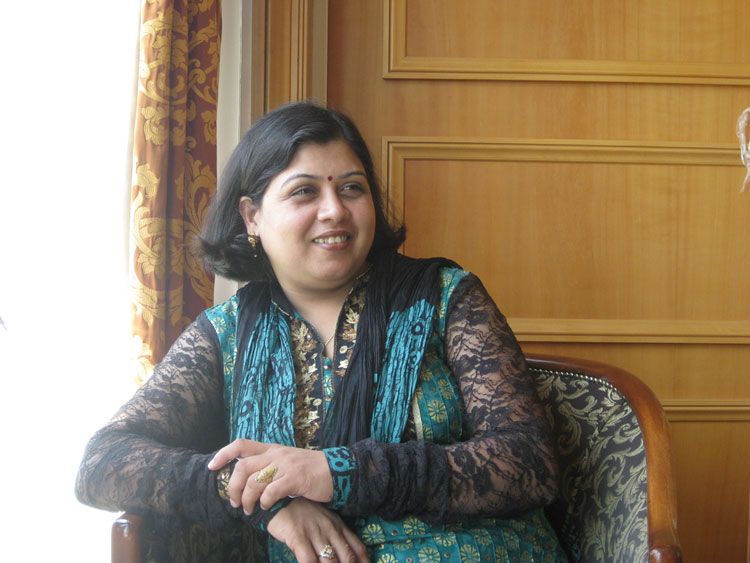In her excellent TED-X talk Susan Colantuono focused on why, despite 50% of women being in middle management in corporate America (and elsewhere), that population is abysmally low in top executive suites. Colantuono squarelyand correctlyputs the blame for that gap on how women are treated differently by their superiors and mentors, as they evolve their leadership through middle management ranks, and end up coming short when it comes to their executive promotions.
Colantuono identifies three major factors in how candidates are viewed for their promotions into the executive suite: Engaging the greatness in you; Leveraging the greatness in others; and Achieving and sustaining extraordinary outcomes when it comes to business performance. She further assertsalso correctlythat when it comes to assessing the contributions of a candidate in the last category of the three factors, managements expectations from men and women marching to their next promotion into the executive suite are different.
She contends that men candidates are coached and mentored to focus on Business, Strategic, and Financial outcomes, whereas women are mentored or guided to focus on achieving greatness through assertiveness, socializing across the organization, being confident in their interactions, and mastering other soft skills. When Colantuono confronted the mentors about their obvious bias she blamed their unexamined mindset for the outcomes of their biases.
As a career coach my experience in this realm is that this unexamined mindset (as Colantuono calls it) of the top brass is not merely limited to how women are treated when it comes to their executive promotion, but even extends to minorities as well, as their equal opportunity blind-spot. (I call it their unconscious incompetence.). It may further compound itself in minority women. So, in my experience women are a subset of this treatment in corporate America (and perhaps outside) as a subclass of a much larger group that includes other constituencies (first and second-generation immigrants, African Americans, and others).
Having now worked with over 6,000 clients globally I find that minorities (that include women) suffer from different expectations from top management in how they are positioned for senior executive roles. This was borne out in a study done nearly 10 years back in the Silicon Valley where Indian and Chinese middle managers (both male and female) were held back when it came to their promotion to upper management, despite their stellar contributions to the companies success in technical advances (Engaging the greatness in you).
Since that decade-old study not much has changed as I witness it first-hand in my practice even today. My experience has also been that it is not just what the top management does not actively do to bring talented minorities into the executive suite, but it is what each of these worthy candidates fails to do, from their side, when they are vying for their next promotion into the executive suite. This aspect of their failing stems from their inability to use their examined mindset to develop strategies that allow them to overcome something that they cannot, by virtue of where they came from (I call this conscious incompetence) or by virtue of who they are (gender).
Let me explain:
To this last point let me bring to discussion the case of my client in a Silicon Valley technology company. He came to me because he felt that despite his stellar contributions he was being sidelined when it came to his first VP promotion. So, during our coaching sessions I explored the make-up of the executive suite and the composition and the dynamic among those who belong to the select executive club. He was frustrated with the technical competencies of that group as a whole compared to what he was able to offer, and when compared to what he had already demonstrated in his superior performance (the first two factors in Colantuonos talk).
Additionally, he felt that one of the key factors in his not being seen as someone belonging to that club was his cultural imprinting and upbringing. While the members of that club talked about their weekend golf games and football, he felt that his inability to engage in those small, bonding conversations with the members of that club prevented him from being seen as one of them.
So, during his most recent 12-month performance review cycle we decided to focus on one factor that he could manage: His business performance that could be immediately tied to strategic and financial results that were directly measurable. This is something he previously did not specifically focus on, as he relied on the norms and criteria outlined in the companys Annual Performance Review.
In addition, we also focused on increasing his social visibility and influencing skills through specific behaviors that he was willing to change. Our strategy was to compensate for his lack of cultural fit (golf, football, and other cultural norms and bonding rituals) with how he improved his sociability with what he was confortable with, rather than faking something with which he was not. He worked hard during the year on both fronts and delivered stellar outcomes that he was able to tie directly to his actions.
The outcome was that he was recently promoted to a VP role (one of the very few of his kind in that company) and now he has become a part of that executive club despite his shortcomings on the social expectations and bonding rituals of that club. Since joining that club his confidence has increased and he is now looking to move up to yet another level after he masters his game at this one. Now he is learning play golf on his own timeline.
So, what is the prescription for minorities and women that feel left out in their race to the executive suite: Work on contributing to your companys business success by focusing on Business, Strategic, and Financial outcomes (Colantuonos 33%) and directly connect the outcomes to YOUR actions on each of these areas. Secondlyand more importantlyfigure out strategies that allow you to fit in by compensating for what you dont bring to the executive club, using strategies that allow you to become part of that circle, as my client did, before being seen as promotion worthy.
Good luck!
| About Author | |

|
Dilip has distinguished himself as LinkedIn’s #1 career coach from among a global pool of over 1,000 peers ever since LinkedIn started ranking them professionally (LinkedIn selected 23 categories of professionals for this ranking and published this ranking from 2006 until 2012). Having worked with over 6,000 clients from all walks of professions and having worked with nearly the entire spectrum of age groups—from high-school graduates about to enter college to those in their 70s, not knowing what to do with their retirement—Dilip has developed a unique approach to bringing meaning to their professional and personal lives. Dilip’s professional success lies in his ability to codify what he has learned in his own varied life (he has changed careers four times and is currently in his fifth) and from those of his clients, and to apply the essence of that learning to each coaching situation. After getting his B.Tech. (Honors) from IIT-Bombay and Master’s in electrical engineering(MSEE) from Stanford University, Dilip worked at various organizations, starting as an individual contributor and then progressing to head an engineering organization of a division of a high-tech company, with $2B in sales, in California’s Silicon Valley. His current interest in coaching resulted from his career experiences spanning nearly four decades, at four very diverse organizations–and industries, including a major conglomerate in India, and from what it takes to re-invent oneself time and again, especially after a lay-off and with constraints that are beyond your control. During the 45-plus years since his graduation, Dilip has reinvented himself time and again to explore new career horizons. When he left the corporate world, as head of engineering of a technology company, he started his own technology consulting business, helping high-tech and biotech companies streamline their product development processes. Dilip’s third career was working as a marketing consultant helping Fortune-500 companies dramatically improve their sales, based on a novel concept. It is during this work that Dilip realized that the greatest challenge most corporations face is available leadership resources and effectiveness; too many followers looking up to rudderless leadership. Dilip then decided to work with corporations helping them understand the leadership process and how to increase leadership effectiveness at every level. Soon afterwards, when the job-market tanked in Silicon Valley in 2001, Dilip changed his career track yet again and decided to work initially with many high-tech refugees, who wanted expert guidance in their reinvention and reemployment. Quickly, Dilip expanded his practice to help professionals from all walks of life. Now in his fifth career, Dilip works with professionals in the Silicon Valley and around the world helping with reinvention to get their dream jobs or vocations. As a career counselor and life coach, Dilip’s focus has been career transitions for professionals at all levels and engaging them in a purposeful pursuit. Working with them, he has developed many groundbreaking approaches to career transition that are now published in five books, his weekly blogs, and hundreds of articles. He has worked with those looking for a change in their careers–re-invention–and jobs at levels ranging from CEOs to hospital orderlies. He has developed numerous seminars and workshops to complement his individual coaching for helping others with making career and life transitions. Dilip’s central theme in his practice is to help clients discover their latent genius and then build a value proposition around it to articulate a strong verbal brand. Throughout this journey, Dilip has come up with many groundbreaking practices such as an Inductive Résumé and the Genius Extraction Tool. Dilip owns two patents, has two publications in the Harvard Business Review and has led a CEO roundtable for Chief Executive on Customer Loyalty. Both Amazon and B&N list numerous reviews on his five books. Dilip is also listed in Who’s Who, has appeared several times on CNN Headline News/Comcast Local Edition, as well as in the San Francisco Chronicle in its career columns. Dilip is a contributing writer to several publications. Dilip is a sought-after speaker at public and private forums on jobs, careers, leadership challenges, and how to be an effective leader. |
Website: http://dilipsaraf.com/?p=2403&utm_source=rss&utm_medium=rss&utm_campaign=2403
Disclaimer: Please use this channel at your own discretion. These articles are contributed by our users. We are not responsible or liable for any problems related to the utilization of information of these articles.












